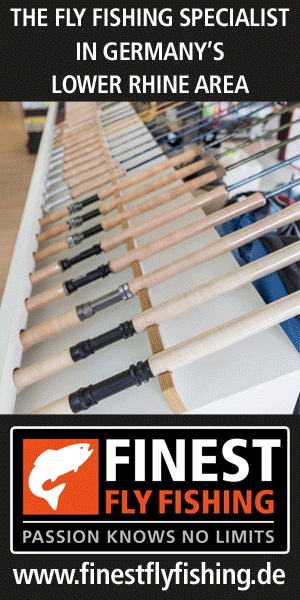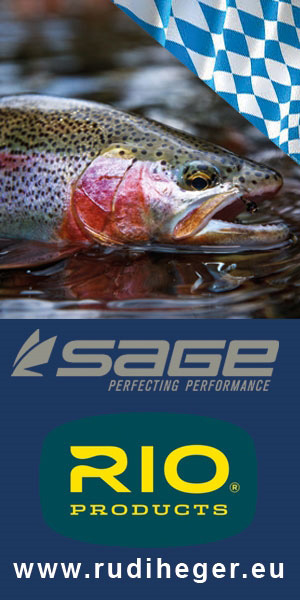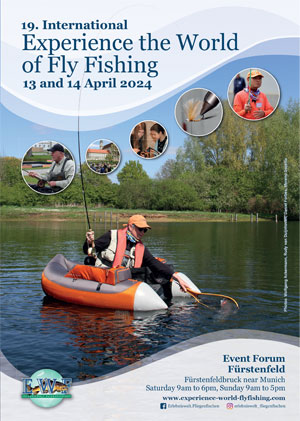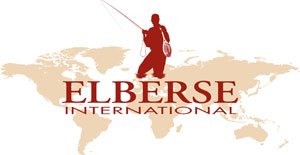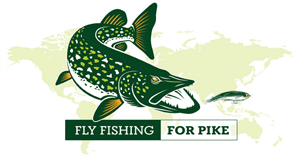
In a decade the international flyfishing show EWF has evolved just like casting itself: it has become more efficient, it depends on technique (experience) more than on power, and numerous casts (subjects) have been added to the vocabulary of the modern flyfisher and to the program of the EWF.
Except for the very first one, I was privileged to be part of all shows of ‘Experience the World of Flyfishing’ so far, either as a fly-caster, fly-tyer and/or photographer for the organisation of the show. And what a show it has become! The largest flyfishing show on the main land of Europe, that attracts visitors from Europe, the USA and even further away; a ‘must go’ event for the flyfisher in springtime. In a beautiful setting you can watch some of the finest fly-casters, not just from the larger region around Munich (with Roman Moser, Christopher Rownes, Sepp Prager, Wolfgang Pijawetz, Uwe Rieder, Christoph Menz, Hans Eiber and Michael Mauri (before he moved to the USA)) but from across the globe (Andi Pfirstinger, Steve Peterson, Uwe Kaptein, Matthias Lilleheim, Raffaele Mascaro, Hans-Ruedi Hebeisen, Howard Croston, Russell M. Whiteman, Rene Didssun, Prescott Smith, Silja Longhurst). You can or could chat and discuss casting with the likes of Charles Jardine, Gary Borger, Bruce Richards, Way Yin, Steve and Tim Rajeff, or follow workshops given by them.

Despite the fact that the Munich area is far away from any salmon fishing rivers, two-handed flycasting has always been an important part of the program on the two days. Not just because of the Scottish casters that bring so much fun and knowledge to the EWF (Ian Gordon, Gary Scott, Scott Mackenzie), but we have seen excellent double-handed casters from many other countries as well: Goran Andersson, Hans Spinnler, Menno van Dam, Henrik Mortensen, Stevie Munn, Hywel Morgan, Andre Scholz, Robert Gillespie, Antti Guttorm, Eoin Fairgrieve and William van der Vorst all showed their skills at one time or another (I am sorry when I missed a few names). And without the help, translations etc. of Jürgen Friesenhahn, all of this would not have the impact that it now has on the people that watch these casting demo’s.

Women and children
Almost from the very start, a lot of attention was given to flycasting for and by women and children. Kate Blubaugh was the great ambassador for this, doing both much liked demonstrations at the pool but also teaching women and children the first basics of flycasting for many hours during the weekend of the show. She could not have done this on her own, was helped a great deal by numerous women and men, but to have someone come from the USA to get women and children to take up this wonderful sport, that meant a lot to many people visiting the show. Women’s groups have turned up, connected through the internet and the love for our sport, and they will now fish together at different locations in Europe and exchange experiences and stories through the websites. At EWF a lot of them will meet each-other again, have a glass of wine or German beer and make plans for the summer season.

We need more children and women in our sport in order for it to grow and prosper, in many countries the average age of the flyfisher is probably close to 50 or even over that figure. In order for it to survive in ten or twenty years, we need a lot more young people to come into our sport; in over ten years time EWF has done a lot in this respect. And what good is double-handed flycasting when there are fewer and fewer salmon around to fish for? EWF understands this and has joined forces with the North Atlantic Salmon Fund in order to support their work and efforts.

Growing big
Casting small artificial flies to trout, grayling and different species of ‘coarse fish’ is one thing, casting big, wind resistant streamers for pike or toothy critters at sea is something else. Different rods, lines and leaders are needed for this, while you also have to adjust your casting as it takes longer now for the flyline to roll out in the air. I showed some of this at the EWF in March 2014 and in April 2016, and I hope to return to numerous future EWF’s to show some more of this exciting way of flyfishing. Exciting in the way everything is often very visible when a northern pike attacks and inhales a streamer fished in shallow water, but also exciting because the pike can grow to an impressive length and weight. Once hooked they swirl, make strong runs, even make acrobatics in the air at times; what more could you wish for?

I wish the people behind and the visitors of the EWF all the best for the coming years. That the show will only become better and more exciting in the coming years makes it all the more fun to make a yearly pilgrimage to EWF.

Website: www.e-w-f.com
